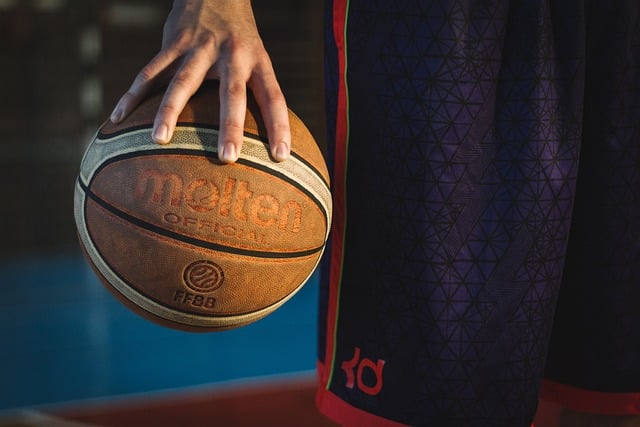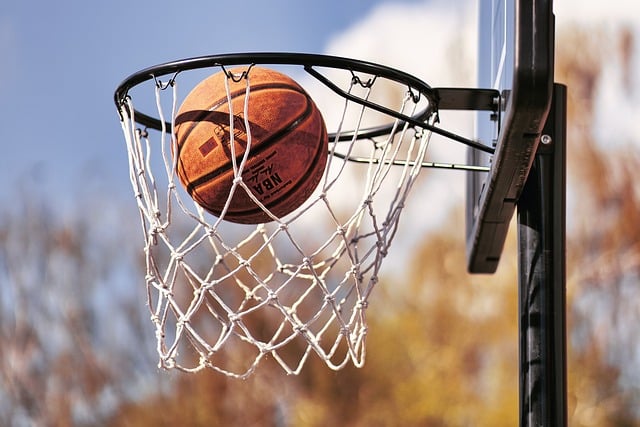In basketball, the game doesn’t end when the final buzzer sounds. While many players focus on their on-court performance, an often overlooked—but equally crucial—aspect of the sport is recovery. Proper recovery can mean the difference between staying at the top of your game and burning out early. After all, you can’t expect to perform at your best if your muscles are fatigued, your body is aching, or you’re running on empty.
Recovery is the unsung hero of any successful athlete’s regimen, and it’s what keeps you healthy and ready to give it your all for the next game. But let’s face it, no one enjoys being sore after a tough match. That’s where basketball recovery techniques come into play. By implementing effective strategies, you can bounce back faster, feel stronger, and perform at your peak.
Let’s dive into some proven recovery techniques that will have you feeling like a new player, ready to take on the competition with fresh legs and a clear mind.
1. Postgame Recovery Tips: Recovering After the Final Whistle
The first step in any solid recovery plan is what you do immediately after the game ends. Your body has just been through intense physical exertion—your muscles have been worked to the bone, and your energy reserves are probably running low. So, what should you do?
Hydrate. I can’t emphasize this enough: hydration is one of the most critical components of recovery. Whether you’re sweating buckets on the court or just giving it your all in a fast-paced game, you’re losing fluids and electrolytes. A simple water bottle isn’t enough. Reach for a sports drink or electrolyte-rich beverage to replenish those lost minerals and keep your muscles from cramping.
But recovery doesn’t stop with hydration. You also want to refuel. After the game, your body craves carbs for energy replenishment and protein for muscle repair. A postgame snack or meal—ideally eaten within 30 minutes to an hour of finishing—can jumpstart your recovery. Something like a protein smoothie with fruit or a chicken wrap with quinoa can do wonders.

2. Stretching and Foam Rolling for Recovery: Unwinding Your Muscles
The simple truth is: when you don’t stretch, your muscles tighten up, and they can take longer to recover. Think of it like winding down after a long day—you don’t just collapse into bed; you prepare your mind and body for rest. Stretching and foam rolling serve the same purpose for your muscles.
Stretching helps improve flexibility, reduces tension, and lowers the risk of injury. Incorporating both dynamic stretches before the game (like leg swings or lunges) and static stretches postgame (such as hamstring stretches or quad stretches) will aid in muscle recovery.
Now, when it comes to foam rolling, this technique is a game-changer. Foam rolling targets the fascia—the connective tissue surrounding your muscles—and helps release tightness. It may be uncomfortable at first, but foam rolling for recovery increases blood flow and breaks down muscle knots, which can speed up recovery and help reduce soreness.
Take it easy when you start—don’t rush through the process. Spend about 1-2 minutes on each major muscle group: quads, hamstrings, calves, and even your back. The more consistent you are, the better the results.
3. Active Recovery Techniques: Keep Moving, Just a Little Slower
You’ve probably heard the saying, “You’ve got to keep moving to keep improving.” Well, that holds true for recovery, too. After a tough workout or game, active recovery can do wonders for your muscles. This type of recovery keeps blood circulating through the body without overtaxing the muscles.
Instead of plopping down on the couch to rest after a game, try a low-intensity activity to help your body recover. This could include activities like:
- Light jogging or walking: This will keep the blood flowing without straining your muscles.
- Swimming: Low-impact and great for overall body recovery.
- Cycling: Again, low-intensity, and it promotes circulation without stressing your joints.
These gentle movements help flush out lactic acid and other toxins from your muscles, leaving you feeling fresher and more energized.
4. Sleep and Recovery for Athletes: Recharge for Tomorrow
Let’s be real—sleep is often the most underrated recovery tool, especially when athletes are constantly on the go. But sleep is essential for proper muscle repair, mental recovery, and overall well-being.
When you sleep, your body goes into “repair mode,” producing growth hormones that are vital for tissue regeneration. For basketball players, that means your muscles are healing and getting stronger while you’re catching some zzz’s.
For the best results, aim for 7-9 hours of quality sleep each night, depending on your age and activity level. If you’ve been pushing hard on the court, you might need even more rest. Power naps (15-20 minutes) after intense training or a game can also help recharge your energy.
But it’s not just about the quantity of sleep; quality matters too. Try to stick to a regular sleep schedule, avoid late-night screens, and create a calm, dark environment to promote restful sleep.
5. Ice Baths and Contrast Therapy: Chill Out for Better Recovery
If you’ve ever watched a professional athlete step into an ice bath after a game, you’ve probably thought, “That looks freezing!” And it is—but it’s also incredibly effective.
Ice baths help reduce inflammation, improve blood circulation, and flush out waste products from the muscles. The cold constricts blood vessels, reducing swelling and helping your body recover faster. After you get out of the ice bath, your blood vessels dilate, allowing fresh, oxygenated blood to flow back into your muscles.
For a more balanced approach, try contrast therapy: alternating between hot and cold treatments. Start with a few minutes in a cold bath, then switch to a warm one. This will improve circulation and help your muscles recover quicker.
Although not everyone loves the thought of ice baths (trust me, I get it), research shows they can significantly reduce muscle soreness and speed up recovery time.
6. Nutrition for Muscle Recovery: Fuel Your Body Right
You can’t out-train a bad diet—and this rings especially true when it comes to muscle recovery. Your muscles need the right nutrients to repair, grow, and perform at their best. You already know that protein is key for muscle repair, but let’s dig a little deeper into your postgame nutrition.
Carbs are just as essential. After intense physical exertion, your glycogen stores (your body’s energy reserve) are depleted. Refilling those stores will help you recover faster and feel less fatigued the next day. Foods like sweet potatoes, rice, and fruits are great carb sources for athletes.
Don’t forget about healthy fats either. They support joint health and reduce inflammation. Incorporate foods like avocados, nuts, and olive oil into your meals.
7. Reducing Muscle Soreness: The Art of Recovery
Everyone’s experienced muscle soreness after a tough game. It’s almost like a rite of passage, right? But the good news is, there are ways to ease the pain and speed up the recovery process.
- Stretching and foam rolling (as mentioned earlier) can help.
- Massage therapy is another great option, helping release muscle tension and improve blood flow.
- Try a warm bath with Epsom salts for relaxation and muscle relief.
8. Recovery Routines for Basketball Players: Consistency is Key
Creating a recovery routine and sticking to it is vital. Recovery isn’t something you do just once—it’s a continual process. Whether it’s stretching, hydration, or a postgame meal, consistency will ensure that your body stays in peak condition all season long.
Incorporate active recovery days into your schedule, prioritize sleep, and be mindful of your nutrition. The better your recovery habits, the better you’ll perform when it’s game time.
Conclusion
In basketball, it’s not all about how hard you play during the game—it’s about how well you recover afterward. With the right recovery techniques, you can reduce soreness, improve performance, and stay healthy throughout the season. From postgame recovery tips and nutrition for muscle recovery to ice baths and active recovery, each strategy plays a pivotal role in keeping your body ready for action.
Remember, recovery is a process, not a one-time fix. Treat it with the same respect and dedication as your training, and you’ll be playing stronger, recovering faster, and dominating on the court. 🏀



